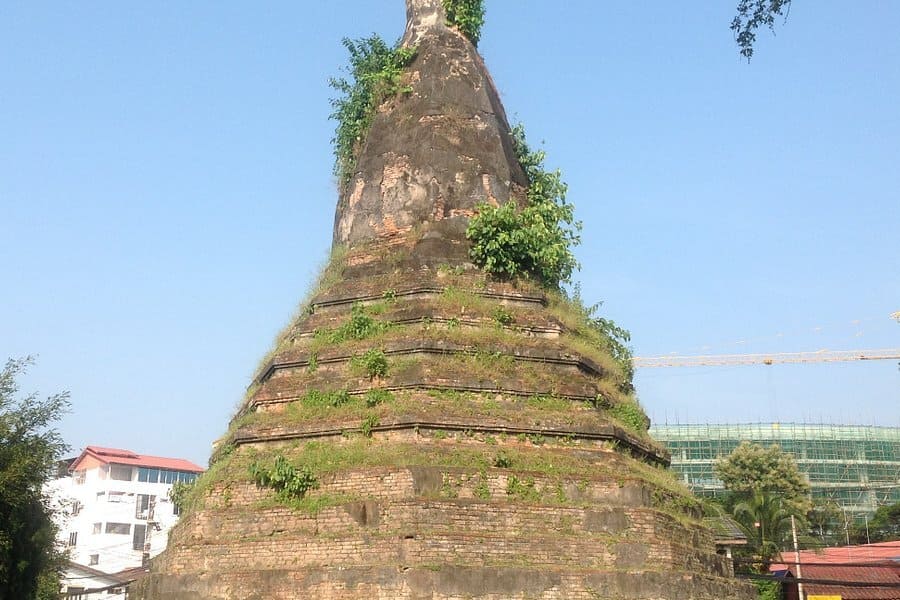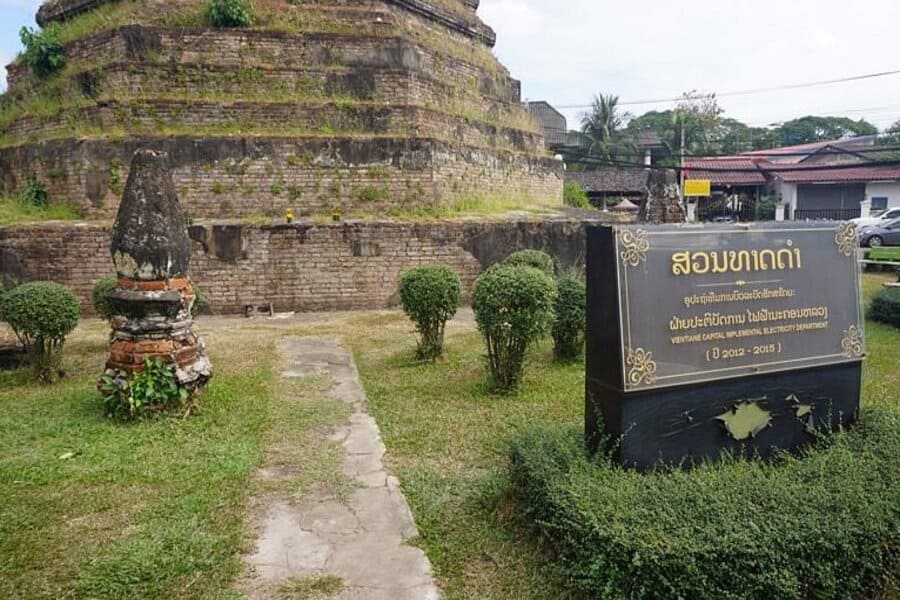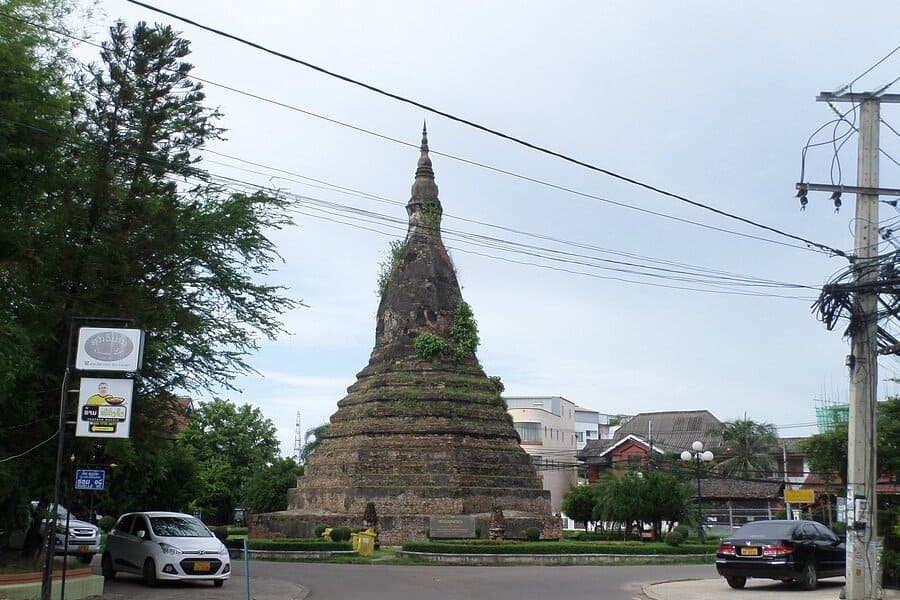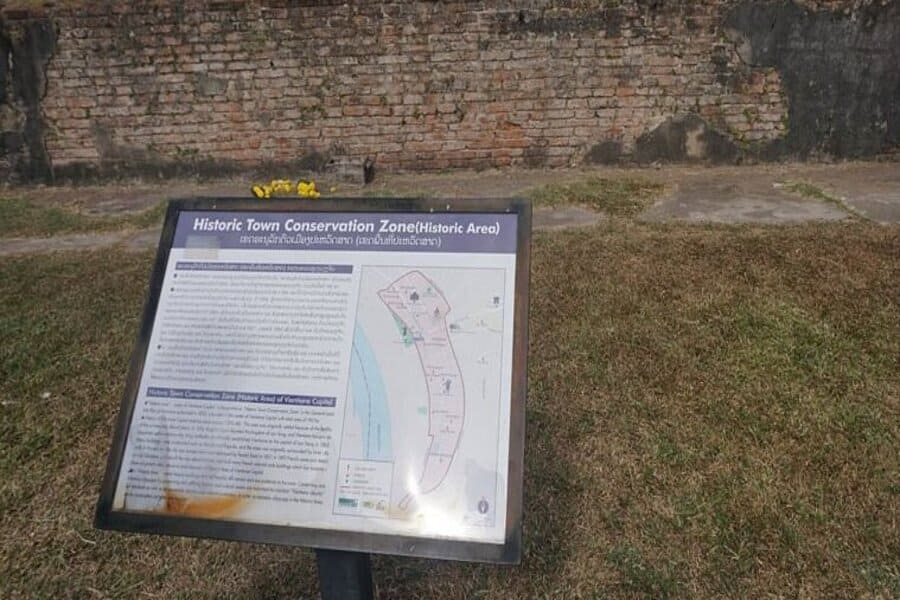Embark on a captivating journey with laos tours to That Dam, also known as the Black Stupa, an enigmatic landmark nestled amidst the bustling streets of Vientiane. This ancient stupa stands as a silent sentinel, shrouded in mystery and intrigue, casting a dark and mysterious presence over the cityscape.
An Overview of That Dam
That Dam, also known as the Black Stupa, is located in the heart of Vientiane, the capital city of Laos. Specifically, it sits in the Chanthabouly district, which is one of the central districts of Vientiane. The stupa is situated near the intersection of Setthathirath Road and Sithane Road, making it easily accessible from various parts of the city.
The History of That Dam (Black Stupa)
The history of That Dam, commonly referred to as the Black Stupa, is shrouded in legend and speculation, contributing to its mysterious allure in the heart of Vientiane, Laos. While the exact origins of the stupa remain uncertain, local folklore and historical accounts offer intriguing glimpses into its past.
According to legend, That Dam was originally part of a grand and opulent temple complex built during the Khmer Empire's reign over the region, dating back to the 13th century. The stupa is said to have been covered in gold leaf, earning it the nickname "That Luang Neua" or "the Great Stupa in the North."
However, as tales go, during the Siamese (Thai) invasion of Vientiane in the 1820s, the gold covering the stupa was plundered by the invading forces, leaving the structure bare and blackened. This event is believed to have led to the stupa's current name, "That Dam," which translates to "Black Stupa."
Beyond the legends, some historians suggest that That Dam may have served as a funerary monument or a religious site of significance for local communities. Its location near the city's center and its imposing presence suggest that it once held great importance in the spiritual and cultural life of Vientiane.
Throughout its history, That Dam has witnessed periods of upheaval, including wars, invasions, and political changes, each leaving its mark on the stupa and contributing to its mystique. Despite its weathered appearance and lack of adornment, That Dam remains a symbol of resilience and endurance, standing as a silent witness to the passage of time and the shifting tides of history.
Today, That Dam continues to intrigue visitors with its mysterious past and enigmatic presence, inviting exploration and contemplation. Whether viewed from afar against the backdrop of Vientiane's skyline or up close, amidst its weathered walls, That Dam stands as a testament to Laos' rich cultural heritage and the enduring spirit of its people.
The Oustanding Architecture of That Dam
The architecture of That Dam, or the Black Stupa, is characterized by its simple yet imposing design. The stupa is constructed primarily of brick and stone, with a cylindrical shape that tapers towards the top. Rising several stories high, the stupa is crowned with a pointed spire, creating a distinctive silhouette against the sky.
What sets That Dam apart is its lack of ornamentation or embellishment. Unlike many other Buddhist stupas in Laos, That Dam is devoid of intricate carvings, elaborate decorations, or colorful paintwork. Instead, its surface is left plain and unadorned, giving it a somber and austere appearance.
The stupa's dark coloration, which ranges from deep charcoal to black, is due to the accumulation of dirt, soot, and moss over the centuries. This weathered patina adds to the stupa's enigmatic allure, creating a sense of mystery and intrigue.
Despite its simplicity, That Dam exudes a quiet dignity and majesty, commanding attention with its sheer size and solemn presence. Its architectural style reflects the timeless principles of Buddhist design, emphasizing harmony, balance, and reverence for the sacred.
That Dam Tour Guide for Tourists
Opening hours
The stupa can be visited daily, 24 hours per day.
Entrance fee
Admission is free.
How to get to That Dam
To reach That Dam, much of the town center is easily accessible by foot. Alternatively, renting a bicycle is a pleasant way to navigate Vientiane, with rentals available for approximately 10,000 Kip per day.
Tuk-tuk services are also available in the downtown area, with prices starting from 20,000 Kip per person. The final fare depends on your negotiation skills and the number of passengers in your group. Shared tuk-tuks may make stops to pick up additional passengers, and detours are possible. However, if you opt for a private tuk-tuk, expect to pay double or triple the shared rate.
Join a guided tour to explore the history and significance of That Dam, and delve into the mysteries that have intrigued generations of Laotians and adventurers alike. Whether you're a history buff, a lover of legends, or simply seeking an unforgettable experience in Vientiane, That Dam promises to captivate your imagination and leave a lasting impression on your laos tours.





